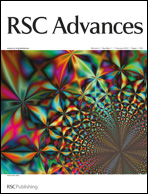Synthesis of nanoporous three-dimensional current collector for high-performance lithium-ion batteries
Abstract
We demonstrate the synthesis of Cu nanoporous three-dimensional current collector via a simple template-assisted method. Silicon, germanium and tin are selected as the anode materials to illustrate the enhanced performance. When tested as electrodes in lithium-ion batteries, they all show high reversible capacity with excellent rate performance. The three-dimensional


 Please wait while we load your content...
Please wait while we load your content...